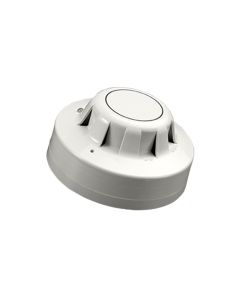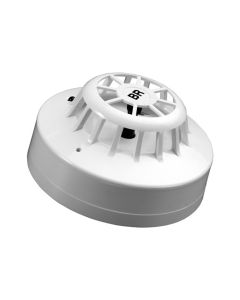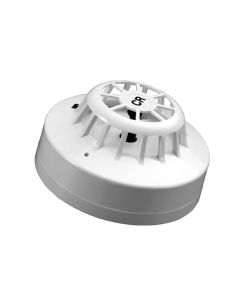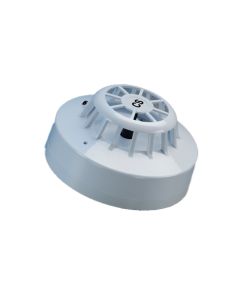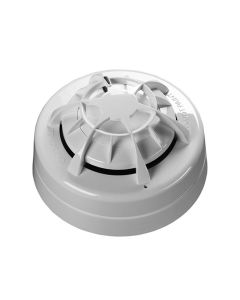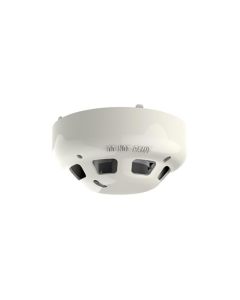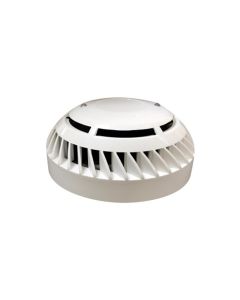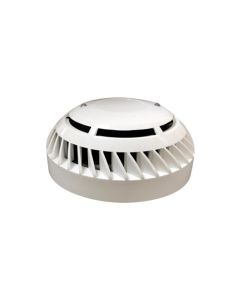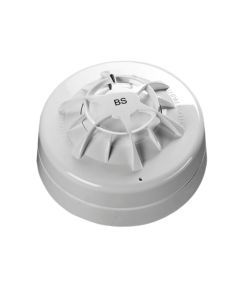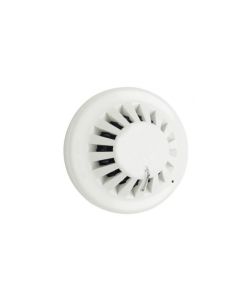We use cookies to make your experience better. To comply with the new e-Privacy directive, we need to ask for your consent to set the cookies. Learn more.
Over 30 Years Experience
We get it right, first time, every time!
Collect from our Trade Counter
Monday to Friday 8.30am - 5pm
Fast Delivery TIMES
Orders Dispatched Same Day*
Conventional Detectors
Conventional detectors provide a cost-effective, reliable, and straightforward solution for fire detection, ideal for smaller or less complex buildings.
By offering zonal alerts, these detectors enable building managers and emergency responders to act quickly, providing effective fire protection without the complexity of addressable systems. Explore the full range of conventional detectors available at Firesense and let our team of experts help you design a fire detection system that meets the specific needs of your building. With Firesense, you can be confident in a system that offers reliable protection, peace of mind, and compliance with the latest fire safety standards.
Conventional detectors are the primary sensing devices within a conventional fire alarm system, designed to detect early signs of fire, such as smoke, heat, or other indicators, and relay this information to the fire alarm control panel. Unlike addressable systems, which provide pinpoint location data by assigning each device a unique address, conventional detectors work within zonal systems, indicating the general area or zone of the triggered alarm. This zonal approach is both effective and economical, making conventional detectors a popular choice for smaller or less complex facilities, such as offices, retail spaces, schools, and residential buildings.
At Firesense, we offer a wide range of high-quality conventional detectors sourced from leading manufacturers. Each detector type is carefully designed to meet stringent UK and international fire safety standards, ensuring reliable performance and durability. Conventional detectors offer dependable fire detection without the need for advanced addressing features, making them a practical choice for smaller buildings where general location information is sufficient for emergency response.
How Conventional Detectors Work
Conventional detectors are configured to detect specific signs of fire, typically smoke or heat, and alert the fire alarm control panel when these indicators reach certain thresholds. Each detector is connected to a zone on the control panel, along with other devices within the same area. When a detector in a particular zone is triggered, the control panel indicates the affected zone, enabling building managers and emergency responders to know which part of the building requires immediate attention. This zonal indication is effective for smaller buildings where a general location alert provides enough information to manage an evacuation or emergency response. Conventional detectors are designed to provide reliable, real-time alerts, ensuring that occupants are made aware of potential fire hazards as soon as they occur. This zonal system also makes conventional detectors simpler to install and maintain compared to addressable devices, which require individual wiring and programming.
Types of Conventional Detectors
There are several types of conventional detectors available, each suited to detect different aspects of a fire, including smoke and heat. The choice of detector depends on the environment and the specific fire risks associated with the building.
Smoke Detectors
Smoke detectors are one of the most common types of fire detection devices, designed to detect particles in the air generated by combustion. Optical detectors are more responsive to smouldering fires, which generate larger, visible particles. Smoke detectors are usually installed in areas like corridors, office spaces, and common areas, where smoke from a fire would spread quickly and reach the detector early.
Heat Detectors
Heat detectors respond to significant increases in temperature, making them ideal for environments where smoke, steam, or dust might be present regularly, which could otherwise trigger false alarms. There are two main types of heat detectors: fixed temperature and rate-of-rise. Fixed temperature detectors activate when the surrounding air reaches a certain temperature, while rate-of-rise detectors are triggered by a rapid increase in temperature over a short period. Heat detectors are commonly used in kitchens, garages, and boiler rooms, where high heat levels can be an early sign of fire without the presence of smoke.
Multi-Sensor Detectors
Multi-sensor detectors combine smoke and heat detection, making them versatile devices that can respond to multiple fire characteristics. These detectors use both smoke and heat sensors to detect fire more accurately, reducing the likelihood of false alarms while providing rapid detection in a range of fire scenarios. Multi-sensor detectors are particularly beneficial in areas where varied conditions may exist, as they offer reliable performance across different environments.
Benefits of Conventional Detectors
The primary advantage of conventional detectors lies in their simplicity and cost-effectiveness. Since conventional systems rely on zonal detection rather than individual addressing, they are more economical, both in terms of installation and maintenance. For smaller buildings, conventional detectors provide a straightforward and reliable solution for fire detection, offering early warnings that help occupants respond quickly.
Conventional detectors are also easier to install and configure, as each zone is wired independently to the fire alarm control panel. This setup reduces the complexity of the system and makes it easier to expand or reconfigure if needed. For building managers and occupants, this simplicity translates to straightforward operation and maintenance, as they can quickly understand the system and respond effectively to alarms without extensive training. Additionally, conventional detectors are highly reliable and durable, offering consistent performance across a range of environments. These detectors are designed to meet strict safety standards and are manufactured with high-quality components to ensure they operate effectively under various conditions. Firesense’s range of conventional detectors includes options tailored to specific environmental needs, ensuring that each zone is adequately covered with the appropriate detection technology.
Ideal Applications for Conventional Detectors
Conventional detectors are well-suited to environments where zonal information is sufficient for emergency response and where a simpler system setup is desirable. They are ideal for smaller facilities where an entire zone can be evacuated quickly based on a general alarm. Common applications include:
Small Offices and Retail Spaces: Conventional detectors provide effective fire detection in smaller commercial buildings, offering straightforward coverage with zonal alerts.
Educational Institutions: Conventional detectors are frequently used in schools and universities, where zonal alerts can help quickly identify affected areas while supporting efficient evacuation procedures.
Residential Complexes: Conventional detectors offer reliable fire protection for residential buildings, where a simple system can ensure occupant safety without the need for advanced location tracking.
Why Choose Firesense for Conventional Detectors?
At Firesense, we are committed to providing high-quality fire safety solutions, and our range of conventional detectors is no exception. We offer a variety of detectors that meet the highest industry standards, ensuring compliance, reliability, and durability. Our team of experts can assist you in selecting the right types of detectors for each zone in your building, ensuring comprehensive coverage tailored to the specific fire risks of your facility. In addition to product selection, Firesense provides support for installation, maintenance, and troubleshooting, helping clients keep their fire detection systems fully operational and compliant with fire safety regulations. Regular maintenance of conventional detectors is essential to ensure ongoing functionality, and Firesense is dedicated to offering guidance and resources to help clients maintain their systems effectively.

